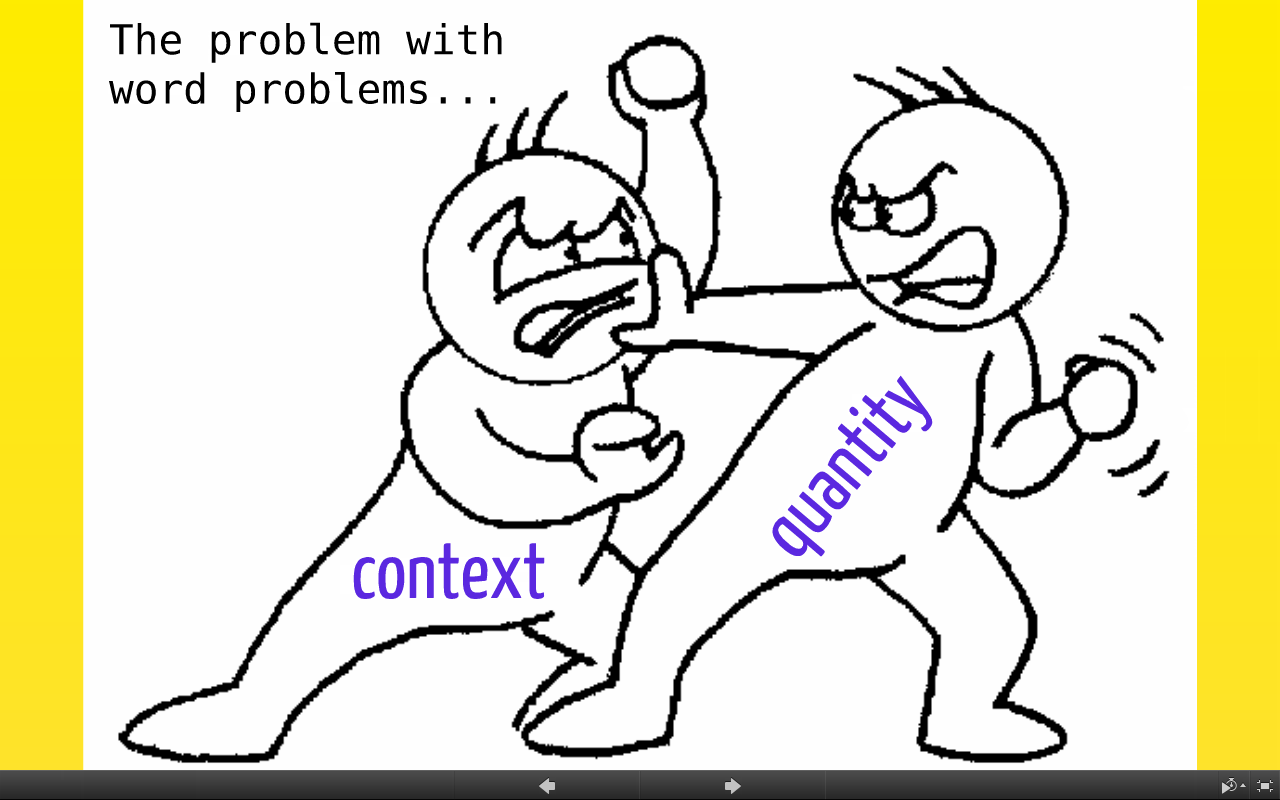I can’t count how many times I have handed a word problem to my students only to become more frustrated than them within the first five minutes. Most people have an opinion on word problems. Either teachers love them or hate them and I have yet to find a teacher at says using them is “alright”. I personally have always liked using word problems even with the complications that had come with them (until recently). Sure there are tasks that still blow up in my face but I probably learn more about myself from those than I do from the ones that go great! With that being said, there are many reasons why students struggle with word problems and I’m sure any teacher can tell you what they are:
- The language barrier
- They just look at the numbers and apply an operation
- They don’t understand what the problem is asking
- …and the list goes on
Probably the biggest thing I have realized is that students really struggle with the last one (They don’t understand what the problem is asking). Almost every task we currently use include the quantities required to solve the problem. This is where the issue with word problems occur in my opinion. By including the quantities in the task, most students focus solely on the numbers and never take the opportunity to understand what the context of the problem is asking. So what usually starts happening is that the context of the problem and the quantities of the problem begin to compete with one another. Unfortunately, the context of the problem usually takes a back seat to the quantities and the rest is history.
The context is usually ignored as students make a crap shoot and apply one of the 4 operation to quantities and pray that it is right. The importance of understanding the context of the problem should ALWAYS precede the importance placed on quantities. Maybe this is why the first Standard for Mathematical Practice states “Make sense of problems and persevere in solving them”.
In traditional math tasks the quantities are explicitly mentioned out loud for the students to see. In recent years, I have tried to use and create math tasks where the quantities are implicit and initially unknown. This means that any quantities required to solve the problem are found by students after they have clearly imagined and processed the situation. I have really tried to use an approach where I am not Bruce Buffer announcing the math task fight card:Context vs Quantity
I try to implement more math tasks where quantity is in a context’s corner and used only when needed or asked for by the student. After all, if it’s the students that are in the ring grappling with the context of the situation, should it not be them that call back to the corner when they need quantities help to make sense of the context?


I recently went to the Math Summit at ISU, and I heard your presentation over word problems. It was really eye-opening to me. I am a Special Education resource teacher and I write a lot of IEP over word problems. I have been writing them all wrong!!! With your blog and presentation, I will now be writing them to understand the context of the word problem before even looking at the quantity.
I totally agree that most of the time the students don’t know what the problem is asking them to do. There is a basic understanding of some math verbiage and key words among students but to understand beyond that is usually a hit and miss practice.